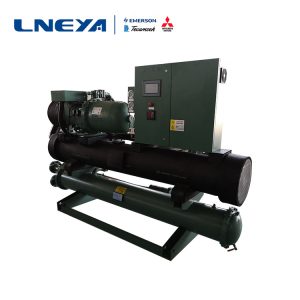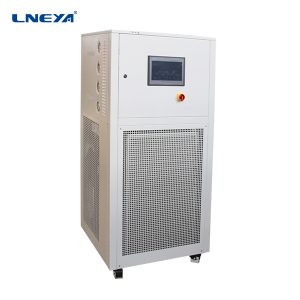What are the advantages and disadvantages of thermal oil heating circulators?

The heat conduction oil heating circulator adopts a fully closed loop structure to directly act on the heat energy to the heated medium.
Its advantages are:
(1) Due to the continuous renewal of the heat transfer surface, the heat loss is small;
(2) The temperature field distribution state of the medium can be changed during operation;
(3) Multiple units can be used in parallel. The closed circulation system has a wide range of applications, such as various boilers, industrial furnaces, air preheaters, dryers, ovens and other places that require heat transfer.
But it also has many shortcomings, mainly as follows:
(1) Air resistance is easy to occur when there is gas or liquid in the system;
(2) It is not easy to realize automatic control and remote control;
(3) It is difficult to adapt to high temperature and high pressure occasions.
LNEYA’s thermal oil heating circulator adopts the complete cooling process to achieve 300°C~50°C cooling, which can continuously increase and decrease the temperature. There is no oil mist volatilization at high temperature, and the heat transfer oil will not be oxidized and browned. It has the function of correcting the internal circulation temperature probe PT100. With safety protection functions, such as self-diagnosis, high-voltage pressure switch, overload relay, thermal protection device, etc. When the system is running, the pressure will not increase due to high temperature, and the heat transfer medium will be automatically replenished at low temperature.
Related recommendations
-
What are the applications of Industrial temperature control machine chillers?
1283Industrial temperature control machine chillers are divided into oil-cooled and water-cooled according to the temperature and medium. The medium used is different for different temperatures, water can be selected for normal temperature, heat tra...
View details -
How to check the air tightness of 40 screw freezer?
1205Air tightness is related to the cooling effect of the entire 40-screw freezer. Therefore, the manufacturer of 40-pin screw freezer of LushiA (LNEYA) recommends that users do 4 inspections, then how to check the work? This test is carried out on a ...
View details -
The Application of Cold Plate Freezer
1005The refrigeration system of cold plate freezer adopts secondary super-cooler technology with the rapid refrigeration and low limiting temperature. It uses imported brand name semi-hermetic piston compressors, semi-hermetic piston compound compress...
View details -
Which industries are used for semiconductor device test equipment?
1129Semiconductor device test equipment is used more in the semiconductor industry. So, how much do you know about the applicable semiconductor conductors? The properties of this substance are still recommended to the user. In general, substances can ...
View details
 LNEYA Industrial Chillers Manufacturer Supplier
LNEYA Industrial Chillers Manufacturer Supplier













